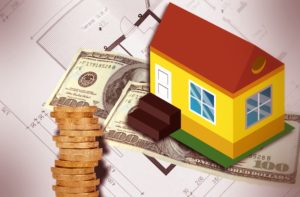 Housing wealth for senior citizens is on the rise. According to the NRMLA/RiskSpan Reverse Mortgage Market Index (RMMI), released by the National Reverse Mortgage Lenders Association (NRMLA), homeowners in the age-group of 62 years and older saw their housing wealth grow to $6.97 trillion in Q3 of 2018. This marks a quarter over quarter increase of 1.4 percent or $97 billion. However, the growth has slowed down slightly compared to last year, when senior wealth saw a quarter over quarter increase of 1.96 percent.
Housing wealth for senior citizens is on the rise. According to the NRMLA/RiskSpan Reverse Mortgage Market Index (RMMI), released by the National Reverse Mortgage Lenders Association (NRMLA), homeowners in the age-group of 62 years and older saw their housing wealth grow to $6.97 trillion in Q3 of 2018. This marks a quarter over quarter increase of 1.4 percent or $97 billion. However, the growth has slowed down slightly compared to last year, when senior wealth saw a quarter over quarter increase of 1.96 percent.
The rising real-estate wealth has also resulted in an increase in reverse mortgages, NRMLA data indicated. The RMMI rose in Q3 2018 to 251.57, another all-time high since the index was first published in 2000. During the same period last year, the RMMI had risen to 233.12.
“At a time when we’re seeing stock market volatility and the potential for a mild recession in the near future, it’s the perfect time for families to gather and take stock of their retirement resources and make necessary adjustments to ensure continued financial security,” said Peter Bell, President and CEO of NRMLA. “Housing wealth should be considered with other financial assets.”
The report indicated that the increase in senior homeowner’s wealth was mainly driven by an estimated 1.3 percent or $115 billion increase in their home values. The rising wealth also meant that senior-held mortgage debt rose 1.1 percent during this period.
Reverse mortgages are available to homeowners who are 62 years or older with significant home equity. Under a reverse mortgage funds are advanced to the borrower and interest accrues, but the outstanding balance is not due until the last borrower leaves the home, sells it, or passes away. According to NRMLA data, approximately 1.1 million households have utilized an FHA -insured reverse mortgage to help meet their financial needs.
Even as housing wealth increases, a recent Federal Reserve survey revealed that 35 percent of households in the 64 to 74 years age group had a mortgage.

 theMReport.com Your trusted source for mortgage banking news
theMReport.com Your trusted source for mortgage banking news








